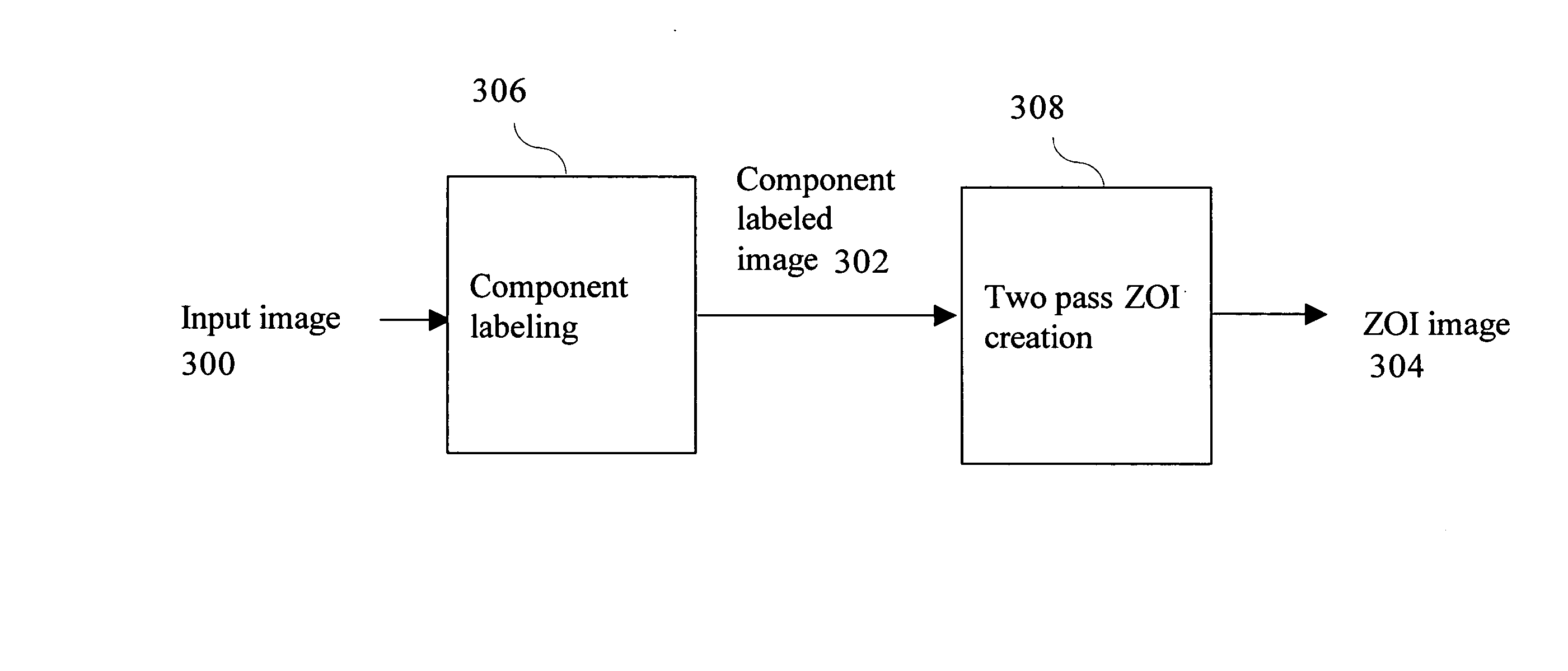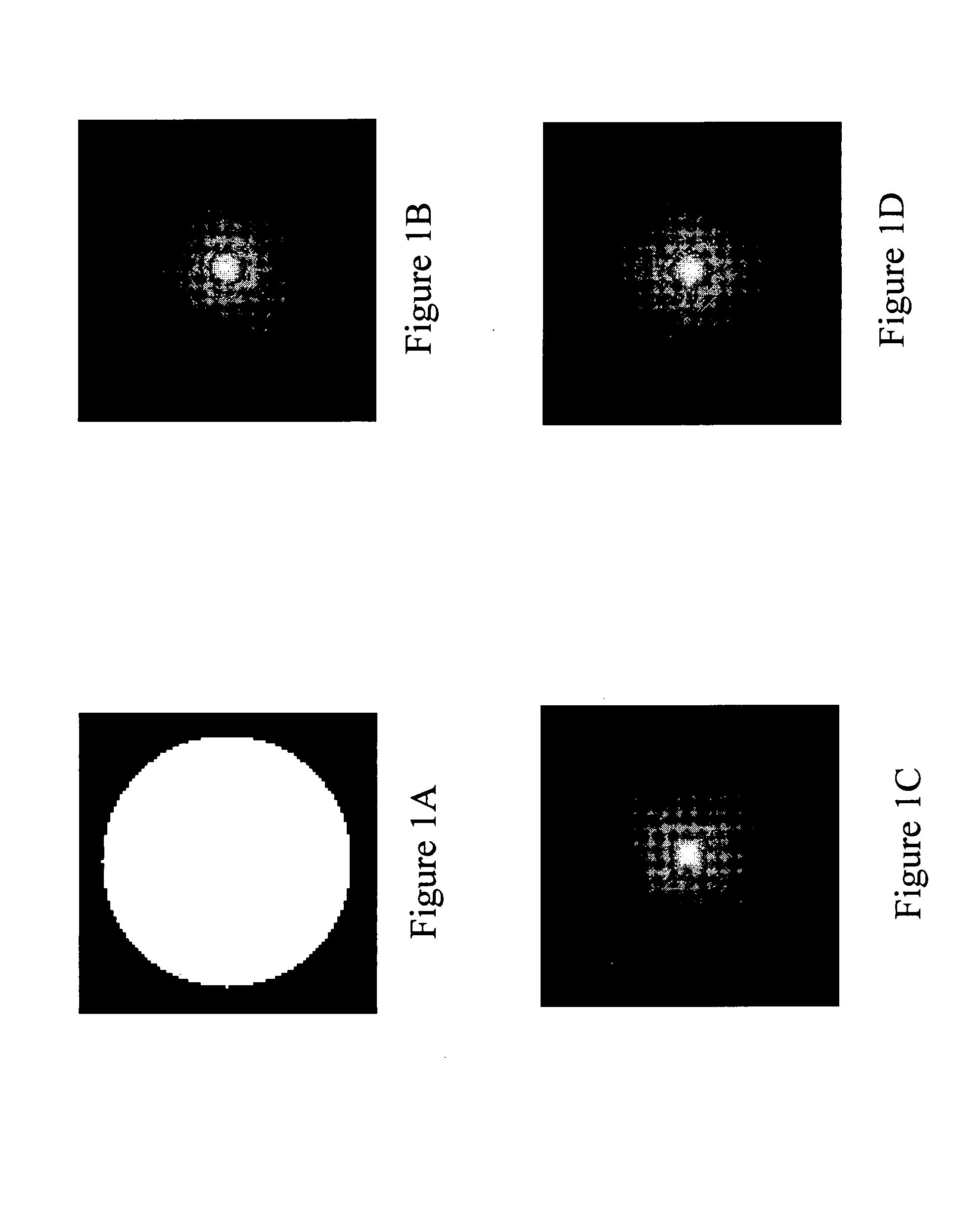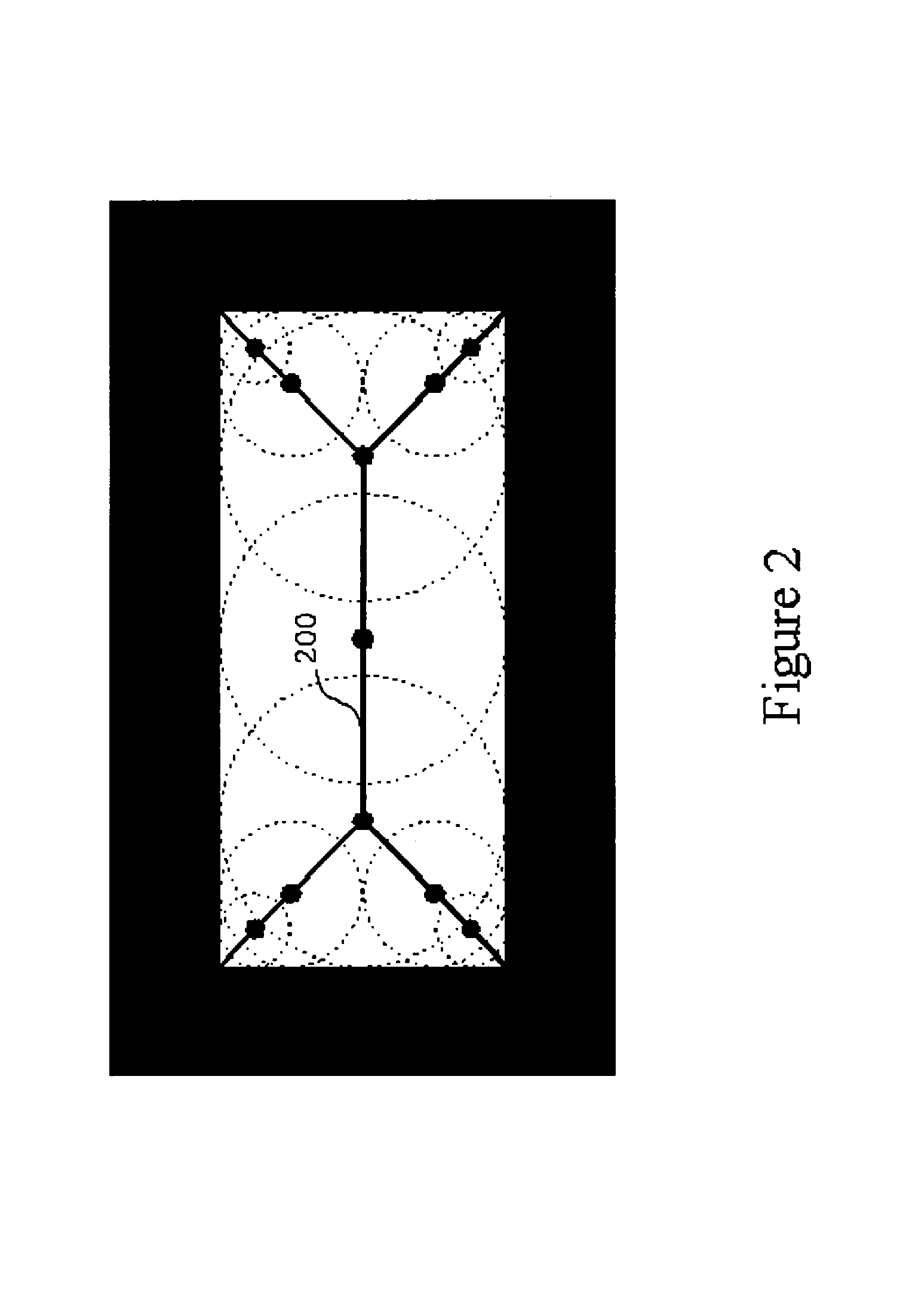Method for adaptive image region partition and morphologic processing
a morphologic processing and image region technology, applied in image enhancement, image analysis, instruments, etc., can solve the problems of complex shapes, time-consuming, and shape-dependent processing time of these methods, and achieve fast image region partitioning, predictable processing time, and processing speed. the effect of mainly
- Summary
- Abstract
- Description
- Claims
- Application Information
AI Technical Summary
Benefits of technology
Problems solved by technology
Method used
Image
Examples
Embodiment Construction
[0029] Given an image I, the foreground distance transform assigns each foreground pixel the shortest distance between the pixel and a background pixel. Conversely, the background distance transform assigns each background pixel the shortest distance between the pixel and a foreground pixel.
[0030] The distance transform is computed sequentially by a two-pass method. The first (forward) pass scans in a left-right top-bottom raster scan order. The second (backward) pass scans in a reverse right-left bottom-top order. In the first pass for a foreground distance transform, the output U(x,y) at pixel position (x,y) is determined by the value of input image I and the values at previously computed positions of U by U(x,y)={min(i,j)∈NB(x,y){U(i,j)+l(i,j)};∀I(x,y)∈foreground0;∀I(x,y)∈background
[0031] In one embodiment, the boundary condition is handled by setting U(x,−1)=0 and U(−1,y)=0. NB(x,y) is the backward neighbors of the pixel (x,y). The backward neighbor...
PUM
 Login to View More
Login to View More Abstract
Description
Claims
Application Information
 Login to View More
Login to View More - R&D
- Intellectual Property
- Life Sciences
- Materials
- Tech Scout
- Unparalleled Data Quality
- Higher Quality Content
- 60% Fewer Hallucinations
Browse by: Latest US Patents, China's latest patents, Technical Efficacy Thesaurus, Application Domain, Technology Topic, Popular Technical Reports.
© 2025 PatSnap. All rights reserved.Legal|Privacy policy|Modern Slavery Act Transparency Statement|Sitemap|About US| Contact US: help@patsnap.com



